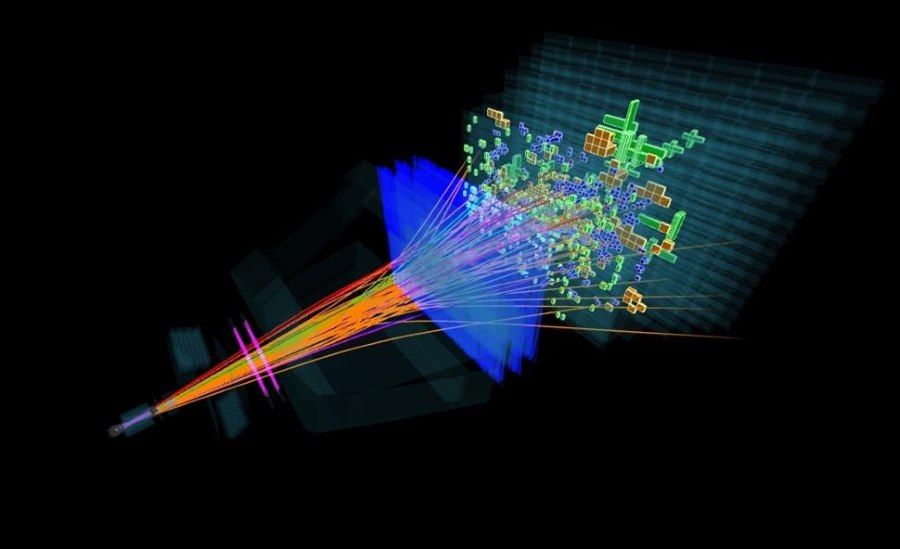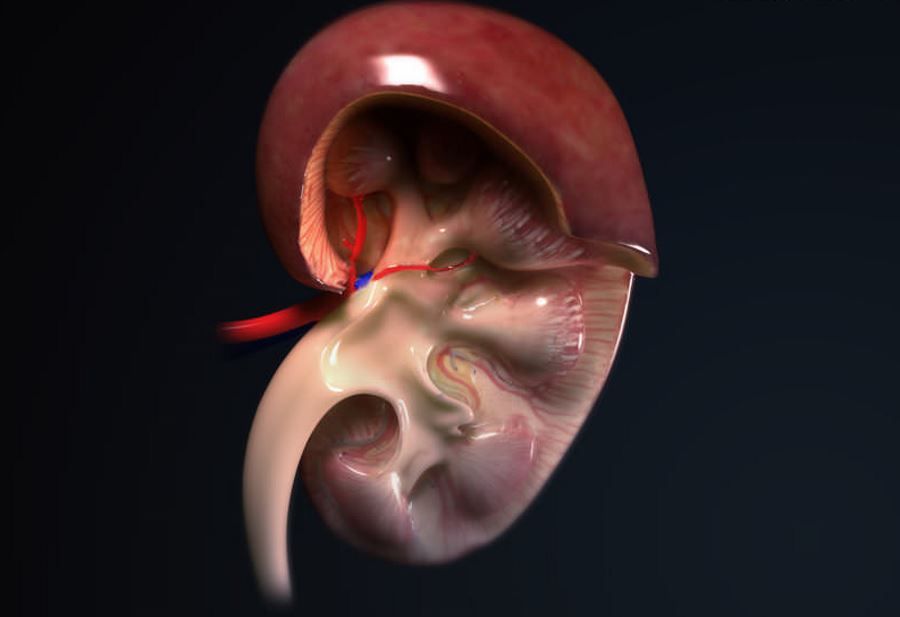Cosmic inflation: the Higgs says goodbye to its “smaller brother”
A yet unknown force field, whose carriers would be new particles – inflatons – should be responsible for the rapid expansion of the Universe immediately after the Big Bang. Research – m.in. Poles – however, they show that the most likely light inflaton – the smaller brother of the Higgs boson – almost certainly does not exist.
In the first moments after the Big Bang, the Universe mohead expand even billions of billions ofoin a billionow times faster than at present. If such inflation has actually happened, a new force field should be responsible for it. Its carriers would be hypothetical particles, inflatons, whichore under many characteristics should resemble the famous Higgs bosons. Physicists from the Institute of Nuclear Physics of the Polish Academy of Sciences (IFJ PAN) in Krakow and the University of Zurich (UZH) were looking for a trace ofoin light inflatonoin meson decaysow beautifully recorded by the detectors of the LHCb experiment at CERN near Geneva. DetailedoHowever, the data analysis puts the existence of light inflatonow under a big question mark.
Once the Universe was extremely dense and hot, and 13.8 billion years ago it suddenly began to expand. Relativity theory allows us to reconstruct the course of this process starting from the fractionaloin seconds after the Big Bang. – One of the earliest remnants of these events, still visible today, is the microwave background radiation, whichore formed several hundred thousand years after the Big Bang. It currently corresponds to a temperature of about 2.7 kelvin and very uniformly fills the entire Universe. It is this homogeneity that has proven to be the great puzzle – mowi Dr. Eng. Marcin Chrząszcz (IFJ PAN)
– When we look at the sky, fragments of deep space visible in one direction may be so far away from those visible in the other direction that light has not yet had time to pass between them. Thus, nothing that happened in either of these areasow, should not affect the second. But wherever we look, the temperature of the distant regionoin the cosmos is always almost identical! Howob could have become so unified? – asks the researcher.
The homogeneity of the microwave background radiation is explained by a mechanism proposed by Alan Guth in 1981. In his model, the Universe is initially expanding slowly, and all of its now-observed fragments have time to interact and emergeoknow the temperature. According to Guth, however, at some point there must have been a very kroA small but extremely rapid expansion of space-time – Even many billionoin a billionoin the billionsoin times faster than the current one. The new force field responsible for this inflation has so bloated the Universe that today its roThe different parts are causally separated.
– A new field always implies the existence of an interacting particle. Cosmology has thus become interesting for physicistsoIn studying phenomena at microscales. For a long time, a good candidate for an inflaton seemed to be the famous Higgs boson. But when the particle was finally observed at the European LHC gas pedal in 2012, it was found to have too much mass. If the Higgs boson with such a mass were responsible for inflation, today’s relic radiation would look different from that currently recorded by the COBE, WMAP and Planck satellites, states Dr. Beetle.
Theorists have proposed a solution to this baffling situation: the inflaton would be a completely new particle, with the properties of the Higgs boson, but a noticeably smaller mass. In quantum mechanics, the sameness of features makes it possible for particles to oscillate: they cyclically transform one into another. An inflation model with such an inflaton would have only one parameter, describing the transition frequency of both particles.
– The mass of the new inflaton could be small enough for the particle to appear in meson decaysoin beautiful B+. And beauty mesons are particles recorded in large numbers by the LHCb experiment at the Large Hadron Colliderow. So we decided to look for decayoin the mesonow with the share of inflaton in the data collected at the LHC in 2011-12 – mowi doctoral student Andrea Mauri (UZH).
If the light inflaton actually existed, the B+ m beauty mesonoheads would sometimes decay into kaon (K+ meson) and Higgs particle, whichora as a result of oscillations would transform into inflaton. After traveling several metersow detector inflaton would decay into two elementary particles: muon and antimuon. The detectors of the LHCb experiment would not register the presence of either higgs or inflaton. However, the researchers at IFJ PAN expected to see kaon emissionoin and the appearance of correspondingly further muon-antimuon pairs.
– Depending on the parameter describing the frequency of inflaton-higgs oscillations, the course of decayoIn mesonoin the B+ should be slightly different. In our analysis, we looked for decayoincluding as much as 99 percent of the. possible values of this parameter – and we found nothing. So we can say with a high degree of certainty that a light inflaton simply does not exist,” states Dr. Beetle.
Theoretically, a low-mass inflaton could still be hiding in the one percent of unexplored variantsoin oscillation – these cases will be definitively ruled out by future analyses using newer, just-collected data from the LHC gas pedal.
Physicists, however, have to slowly get used to the idea that if the inflaton exists, it is a more massive particle than thought or comes in more than one variety. However, if, in time, these variants too turn out not to correspond to reality, inflation, so well explaining the observed uniformity of the Universe, will become a – very literally – The biggest mystery wspomodern cosmology.
The research at IFH PAN was carried out with funding from the National Science Center.


